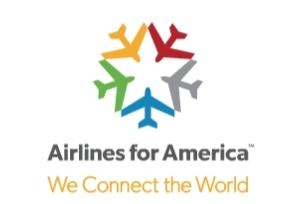Personal Incomes Rise, Airfares Do Not Keep Pace With Inflation
Airline industry trade organization Airlines for America (A4A) has delivered its Summer Air Travel Forecast and first-quarter 2014 results for U.S. passenger airlines, which achieved strong operational performance and modest profitability in the face of one of the harshest winters in memory.

A4A projects summer 2014 air travel to rise to its highest level in six years, with a record number of passengers traveling internationally on U.S. carriers. Approximately 210 million passengers (2.28 million per day) are expected to fly U.S. airlines from June 1 – August 31, up 1.5 percent from 2013. This includes 29.9 million travelers (325,000 per day) on international flights – an all-time high. Published airline schedules show Canada, Mexico, the United Kingdom, Germany and Japan, respectively, as the top five nonstop destinations from the United States.
“It’s a great time to fly, as air travel remains one of the best consumer bargains in America, given its superior speed and affordability,” said John Heimlich, A4A Vice President and Chief Economist. “U.S. airlines are well prepared to accommodate the increased travel demand in the summer months by adding seats and continuing to make customer-focused investments in their product.”
During the first quarter of 2014, nine publicly traded U.S. passenger carriers collectively reported a Generally Accepted Accounting Principles (GAAP) net profit of $401 million, resulting in a 1.1 percent net profit margin, improved from a collective net loss of $552 million during the same period in 2013. Operating revenues rose 3.7 percent year-over-year due in large part to a 1.1 percent increase in the number of air travelers, the equivalent of an additional 21,000 passengers per day. Fuel remained the largest and most volatile cost for airlines, accounting for 33 percent of overall operating expenses.
Despite entering 2014 with approximately $72 billion of debt and coping with some of the worst winter weather on record, modest financial progress enabled carriers to continue significant levels of reinvestment to further enhance the customer experience. First-quarter capital expenditures for the nation’s airlines totaled $3 billion, on track to meet the $12 billion in reinvestment expected for the full year. Advancements include 1,751 new aircraft, of which 255 are scheduled for delivery in 2014 or the equivalent of roughly one aircraft received every weekday of the year.
“The modest margins are enabling airlines to shore up their balance sheets while accelerating reinvestment in people, products and technologies that enhance the overall travel experience,” said Heimlich. “In the first quarter, airlines did a great job meeting the needs of their customers despite facing severe winter weather, including two of the worst aviation weather days ever recorded.”
Heimlich noted that, while U.S. airline finances are steadily improving, the industry still faces significant financial challenges, including paying down debt, pursuing investment-grade credit and seeking margins on par with or better than the S&P 500 average.
Four decades ago, taxes and fees accounted for less than one tenth of the price of an airline ticket. Today, the amount has skyrocketed to nearly a quarter of the price or $62 on a typical $300 roundtrip domestic ticket. That amount is scheduled to rise again in July to $63 when the Transportation Security Administration’s passenger tax increases to $5.60 on a one-way trip. It could go even higher if other taxes proposed by the Obama administration become law. Adding insult to injury, DOT’s Full Fare Advertising Rule enables the government to hide the outsized, ever-increasing amount that airline customers pay in government-imposed levies by burying the charges in the advertised price of a ticket.
“Since travel is often optional for individual consumers and businesses, even the smallest increase in the total price of a ticket has a negative impact on travel decisions,” said Heimlich. “DOT’s Full Fare Advertising Rule dampens demand for air travel and harms the economic viability of our nation’s travel and tourism industry, which generates over $2 trillion in U.S. economic activity annually, by enabling the government to bury tax hikes in the advertised price of a ticket.”
A4A launched a campaign to Restore Transparency in Airfare Advertising Rules and encourages customers, airline employees, stakeholders and the general public.
 NTSB Final Report: Rutan Long-EZ
NTSB Final Report: Rutan Long-EZ ANN FAQ: Turn On Post Notifications
ANN FAQ: Turn On Post Notifications Classic Aero-TV: ICAS Perspectives - Advice for New Air Show Performers
Classic Aero-TV: ICAS Perspectives - Advice for New Air Show Performers ANN's Daily Aero-Linx (06.28.25)
ANN's Daily Aero-Linx (06.28.25) Aero-News: Quote of the Day (06.28.25)
Aero-News: Quote of the Day (06.28.25)



